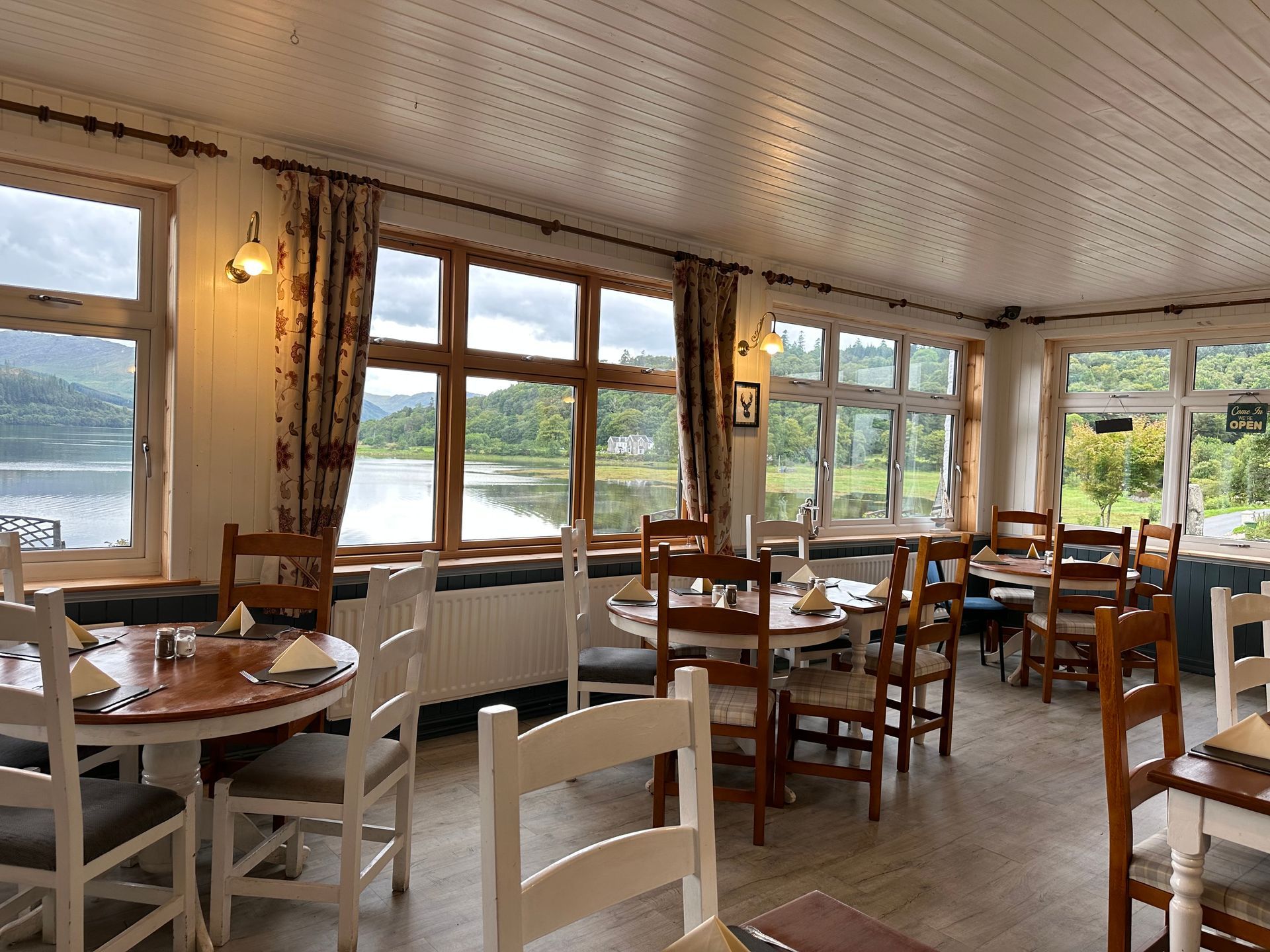History and heritage
The spirit of discovery is part of our past and present

The Strontium Connection
With the exception of our Sunart Suite, our room names have been inspired by our mining heritage and named after local mines. Strontian was established in 1724 to provide accommodation for lead miners working in the galena ore mines. The mines reached their peak in 1730, when they employed 600 men extracting silver, lead and zinc, before going into a period of decline, until something that was to have global impact was discovered in them.

The mines here achieved 'celebrity' status in 1791 with the identification of stronia (strontium monoxide) in the local mineral Strontianite. It was a discovery of huge significance as it was predominantly used in the production of sugar from sugar beet, and it was named after the village. The lead mines continued to be worked intermittently during the 1800s and first half of the 1900s. The last mining in the area took place in the 1980's, extracting barite for use in the North Sea oilfields.
The colours we use in our branding reflect the core colours found in strontianite. One of the other better-known uses for strontium was in glass for colour television cathode ray tubes, where it prevented X-ray emission, but it has a variety of other unique uses globally. You can find out more about mining in Strontian here. If you fancy a walk to explore them you can find route maps here.
Built in the early 19th Century, the Strontian Hotel was formally the mine manager’s house back in 1820. It has obviously been modernised and renovated since, but we wanted to retain all the feel and heritage reminiscent of the period, hence naming the rooms after the pioneers who lived and work here, and not stripping back features which we feel embody the essence and atmosphere of this lovely building. Our aim as custodians of this lovely hotel is to continue to restore as many original features as possible.
This charm is particularly apparent in our lounge area, which would have been the main drawing room in that Georgian era, although you could be mistaken for thinking it has a very Victorian feel. Guests are welcome to make themselves at home in the lounge, and we will happily light the fire for you if you ask on cooler days. Here we have a range of pictures on show depicting Strontian at that time, so it's a place where you can sit and soak up all the atmosphere of that bygone era.
The original owners were clearly ahead of their time back then, and the spirit of entrepreneurship and discovery continues in our ethos and is at the heart of the Strontian Hotel even to this day.
MORE STRONTIAN HISTORY
Welcoming visitors to the area has long since been a key industry in Strontian, thought of as particularly beautiful with it's pretty white buildings, lochside position and mountainous backdrop. By 1820 Strontian lay on the road Thomas Telford built the road to link Corran with Acharacle and, as an obvious beauty spot, it also became a regular stopping point for steamers providing services to Tobermory on Mull.
The village name in Gaelic, Sron an t-Sithein, translates as the nose of the fairy hill, meaning a knoll or low round hill inhabited by the mythological sídhe, revealing both a spiritual and mythological side to local beliefs.

For those wondering what the stone is outside the hotel, it is a Standing Stone (Clach a' Bhranguis) also known locally as the Branks Stone or the “Penance Stone”. This apparently prehistoric standing stone measures 5ft 2ins by 2ft by 14ins, with a deep notch in its top and an iron ring sunk into it , and people were chained to it as a punishment on market days. So, while it looks very romantic, it reminds us of past practices in the rural Highlands. We think it makes for a beautiful, atmospheric view from our breakfast room though.
There's another ancient stone nearby at Clach na Criche which legend says has magical powers, and it's a target for those looking for a nice spot to enjoy the views from, too. An ancient 'wishing stone' and a peaceful picnic site, it's a spot where you can relax and enjoy a scenic picnic looking across the sound to the Isle of Mull. Here you can watch the Mull Ferry ploughing back and forth between Lochaline and Fishnish and spot sea eagles fishing in summer. Clach na Criche means 'Boundary Stone' in Gaelic – and this remarkable formation did mark the boundary between two ancient parishes – but it’s the stone’s magical reputation that is more intriguing. The stone was said to have the power to grant wishes. According to local folklore, all you had to do was fill your mouth with water from a nearby spring, then hold it in your mouth as you passed through the hole in Clach na Criche three times (without using your hands). If you were thinking hard enough about your heart’s desire while you were doing all that, your wish would be granted!
The village has another claim to fame and intriguing footnote in history. In 1843, a local landowner refused permission to build a Free Presbyterian Church in the area. The village clubbed together to commission the build of a vessel on Clydeside, had it converted into a church, and then had it towed it up the West coast of Scotland to a mooring nearby on Loch Sunart (in the next bay along from ours), where it became known as the Floating Church. This served the community until the 1870s, and was a clear demonstration of the spirit and determination of the locals here, which continues to this day.







